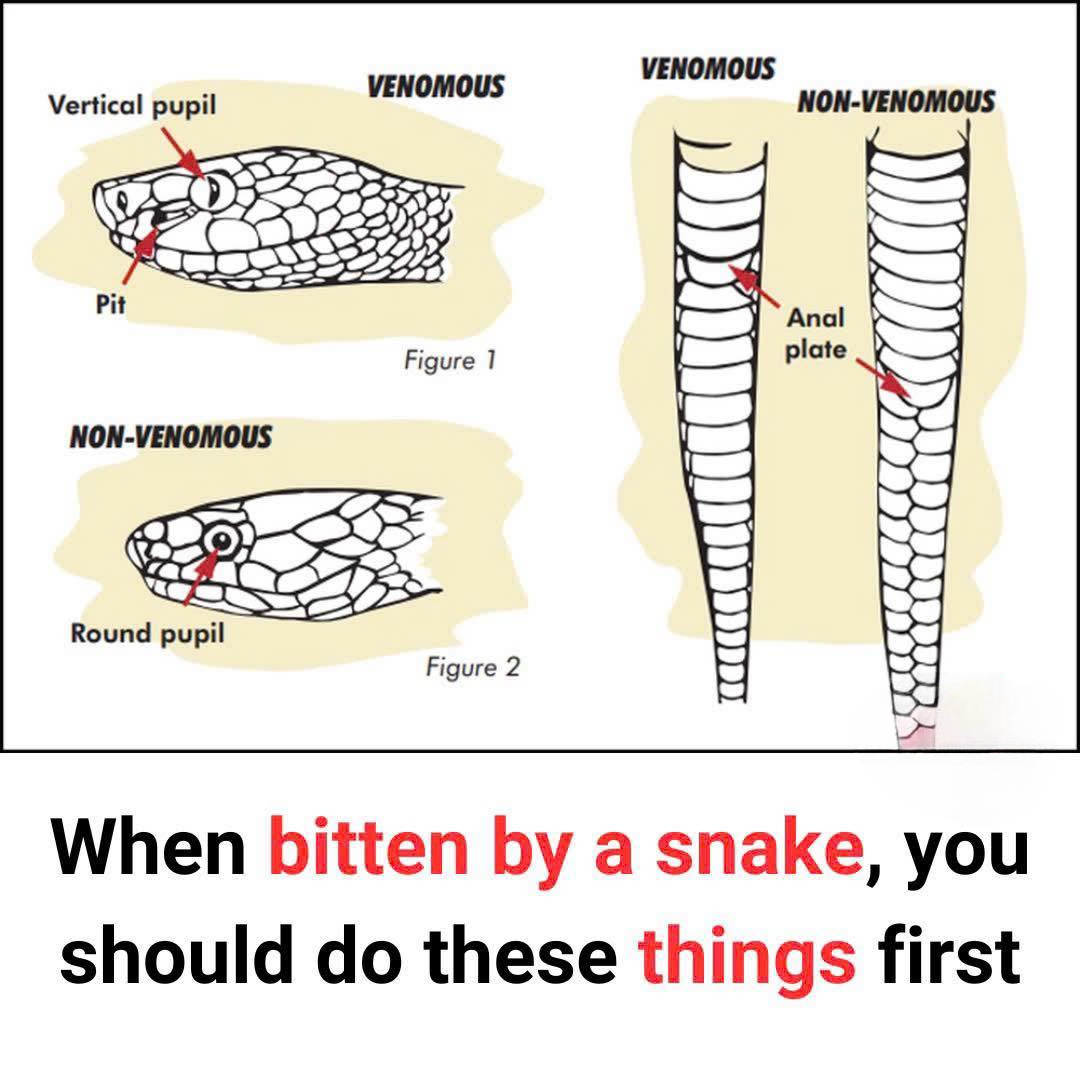Snake bites can cause fear, but knowing what to do can help you respond effectively. If bitten, the right actions in the first minutes can be life-saving. Ignore old myths like venom sucking or cutting the wound—they do more harm than good.
In North America, most snakes are harmless, but venomous ones include rattlesnakes, copperheads, cottonmouths, and coral snakes. Pit vipers have triangle heads and heat sensors; coral snakes have red, yellow, and black stripes. The rhyme “Red touches yellow, kill a fellow; red touches black, friend of Jack” helps identify coral snakes.

Bites often happen when people accidentally get too close, usually on hands or arms. Nonvenomous bites cause mild pain and redness; venomous bites cause intense pain, swelling, nausea, and sometimes breathing trouble. Coral snake venom affects the nervous system, causing weakness or paralysis. If unsure, treat the bite as venomous and get medical help. Dry bites still need attention.
If bitten, stay calm, call emergency services, and keep the limb still and lower than the heart. Remove tight items like rings to avoid swelling problems. If possible, observe or photograph the snake safely.
Don’t cut the wound, suck venom, apply ice, or use tourniquets. Avoid alcohol and caffeine. Never try to catch the snake. Snakes usually avoid humans and only bite when threatened. Wear boots and long pants outdoors, stay on clear paths, and avoid unseen areas. Most bites aren’t fatal if treated correctly. Sharing this knowledge can help keep everyone safe.


